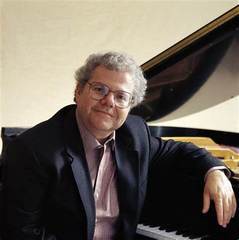|
Back
With a Little Help from His Franz’ New York
Isaac Stern Auditorium, Carnegie Hall
04/27/2023 -
Franz Schubert: Piano Sonatas in A Major, Op. Posth. 120, D.664, & in B‑flat Major, D.960 – Schwanengesang, D.957: 3. “Aufenthalt” & 1. “Liebesbotschaft” – Die schöne Müllerin, D.795: 19. “Der Müller und der Bach” – Ständchen, D.889 (Arranged Franz Liszt, S.560, No. 3 & No. 10, S.565, No. 2, & S.558, No. 9)
Franz Liszt: Années de pèlerinage I, S.160: 6; “Vallée d'Obermann”
Emanuel Ax (Pianist)

E. Ax
“Schubert is, without doubt, one of the greatest composers who ever lived. In him, we find an inexhaustible richness of melodic invention, a profound harmonic sense, and a remarkable sense of form. His music is not only beautiful, it is also deeply expressive, and reveals a powerful emotional range.”
Franz Liszt
“It is a testament to his genius that his music continues to captivate and inspire us to this day. His music is timeless and will always be relevant.”
Franz Liszt
I once asked a famous movie star what was the single most important element for acting success. In less time than a hemidemisemiquaver, he gave me a one-word answer, and elucidation.
“Grace,” he said. “Whether John Wayne in a bar‑fight or Jerry Lewis as spastic or Charles Laughton waddling through his last picture, they all possessed that most singular attribute. Pure grace.”
With the first notes of Schubert’s early A Major Sonata or the stormy philosophical Liszt Vallée d’Obermann or the mysteries of bells and dances and funereal puzzles of Schubert’s B Flat Sonata, Emanuel Ax exhibited this almost very human grace. A grace of intrinsic control, touch and a total understanding of the work, the piano, and music itself.
My words have nothing to do with Emanuel Ax. He has no idiomatic movements, no extremes. Every experience with him brings a sense both of wonderment and delight. He enters the stage with a shaggy humility, he presses the first notes with a comfortable courtliness, and we can sit back and simply inhale the grace of inspiration.
Last night he started with an early Schubert sonata. The word “early” for a great composer hints at cleverness, naiveté, promise. Not when Emanuel Ax takes on the A Major Sonata. This was Schubert like Venus rising from the waves. A beauty consummate. Other pianists play it with placidity, with aplomb. Mr. Ax played that first movement with an inner calm which never relaxed its melodic cohesion
The Andante was not the young Schubert at play. It was Schubert the singer, singing the songs of affection, tenderness. The Rondo Finale is sometimes dubbed inferior to the first two movements. Mr. Ax never considered that at all. It was jaunty, the themes moving from debonair to oafish, and back again to the beginning. As if the pianist had said, “We started with a dream, continued with conscious happiness and finished with joy, real joy.”

F. Liszt (1840)/F. Schubert (Posthumous)
Before the monumental, cryptic B Flat Sonata, Mr. Ax played four of Liszt’s song arrangements. Ordinarily, I find Liszt’s transcription marvelous pictures. Here, following the A Major Sonata , Schubert’s simplicity had become overdone, though hardly inflated. Liszt was too enchanted with Schubert’s melodies, but he couldn’t resist dressing them up.
In the following “Vallée d’Obermann,” Liszt was untethered. No more keeping with those gorgeous Schubert abstractions. Here he wrote about a man’s “intrinsic and poetic meaning of things”, though I have a feeling Mr. Ax was concentrating on the ex‑trinsic meaning of great pianism. His music was a non-philosophical trip from desolation to a radiant center, back to the beginning. How he did it was Mr. Ax’s secret, but somehow he ventured from Wagnerian chromatism to High Romantic ecstasy and back again. Yet nowhere could one say, “Aha! Here he goes with those glorious C Major ecstasies.” This was one work, less a tone poem than a single adventure.
The second half was confined to Schubert’s B Flat Sonata. Though confined is the wrong word. Mr. Ax knew through his great intelligence that so many emotions were manifest–and so many mysteries kept mysterious–that it was a world unto itself.
Mr. Ax never had to emphasis those cryptic trills in the first movement. In fact, only after the concert (for one never analyzed the work while he was playing) did one relate Schubert’s three bell icons. The Stygian demon bells in the opening, the consistent heavenly bell in the second, and the motivic bell in the finale.
The pianist never punctuate these sounds, or any other. For Franz Liszt, yes, he might have presented a particular picture. For this final Sonata, written in Schubert’s final year on earth, Emanuel Ax let the notes, the secrets, the lamentations, Schubert’s musical reflections sing for themselves.
And for ourselves as well.
Harry Rolnick
|